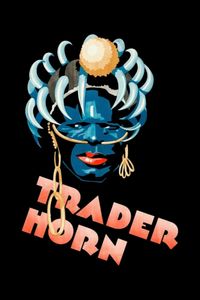Trader Horn (1931)

(On Cable TV, April 2019) Movies were something else in 1931, and Trader Horn is a tour through everything that has changed since then. Whether you want to talk about the film’s wobbling technical quality, its blatant exposition, simplistic plot or colonialist tendencies, there’s a lot of material for discussion here. I imagine that at the time, the chief appeal of the film was primarily as a way to see Africa and its wildlife on the big screen, from lions to giraffes all identified through a mildly hilarious travelogue sequence that doesn’t even attempt to hide its wide-eyed nature (even commenting upon how it’s not that unusual to see that many animals all close together). I also imagine that shooting the film on location was unimaginably difficult, explaining both the lush location and the disjointed editing of the result when there’s no time or resources to get it perfectly the first time. (Oh wow: checking its Wikipedia article, I see that it was not only the first non-documentary film shot in Africa, but a substantial portion of the cast and crew —including director W.S. Van Dyke—fell ill and a few actually died of various mishaps during filming.) What’s left is a piece of history, but perhaps not a very pleasant one: the depiction of the native tribe is straight-up from the Victorian colonialism period, even though it’s not quite as offensive as I was dreading. Still, this is a film about white explorers discovering picturesque Africa, and no cliché is left unturned, including the white princess to be brought back to civilization. (Edwina Booth looks fantastic in the role, but she paid for it by falling gravely ill for years following the film’s production and never became the superstar that her performance suggested.) Trader Horn is, in most respects, a rough watch: thematically, technically, and creatively, it shows its era’s limits more often than not. But I still found it unexpectedly compelling even though there are much more enjoyable movies from its time. This is one case where it’s probably better to read about the film’s extraordinary production history before watching, in order to best appreciate the labour that it represented.